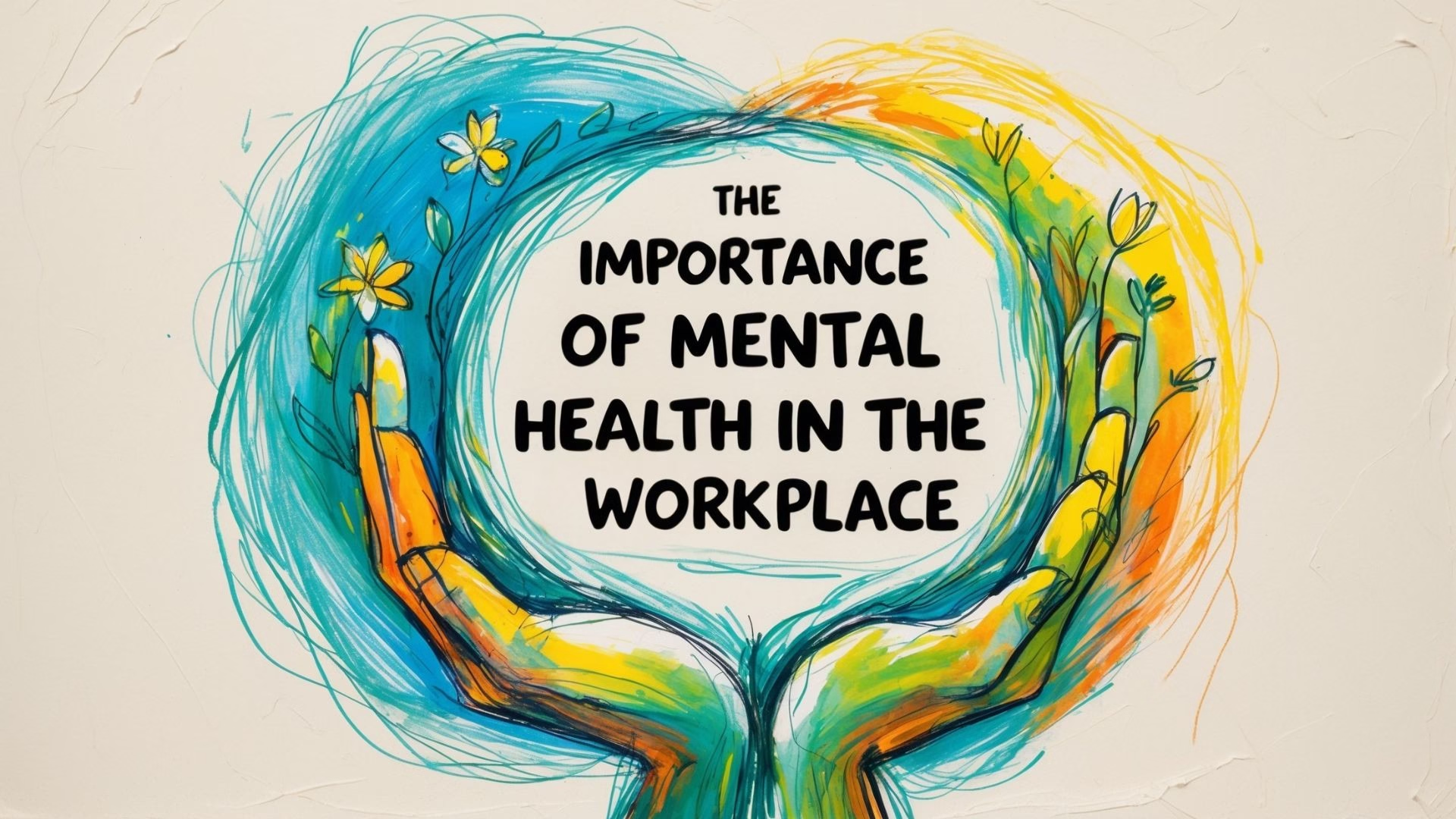Sharpen Your Listening for Exam Success
Welcome to your listening practice session! Excelling in the listening sections of international exams like TOEFL, IELTS, and SAT requires more than just understanding words; it demands active engagement and strategic listening. Today, we’ll focus on a crucial topic: mental health in the workplace.
Here are a couple of universal tips to boost your performance:
- Predict and Prepare: Before the audio starts, glance at the questions if possible. Think about the topic – “Mental Health in the Workplace.” What kind of vocabulary and ideas might come up? (e.g., stress, burnout, support, productivity, policy). This primes your brain to catch relevant information.
- Listen for the Gist and Key Details: Don’t try to understand every single word, especially on the first listen. Focus on the main ideas being presented. Listen for signal words (like however, furthermore, in conclusion) that indicate structure and important points. Pay attention to stressed words and repetition, as speakers often emphasize key information.
- Don’t Panic if You Miss Something: It happens to everyone! If you miss a word or phrase, don’t get stuck on it. Focus on understanding the following information. You can often infer the meaning from the context later. Stay calm and keep listening.
Now, let’s dive into today’s listening passage about the importance of mental health in the workplace.
Listening Quiz
Listening Transcript
Listening Transcript: Please don’t read the transcript before you listen and take the quiz.
Good morning, everyone. Today, I want to address a topic that has gained significant traction in recent years, yet often remains shrouded in misunderstanding or relegated to the periphery of corporate concerns: mental health in the workplace. For too long, discussions about employee well-being primarily focused on physical safety and perhaps ergonomic comfort. While these are undeniably important, they represent only one facet of a truly healthy and productive work environment. The psychological well-being of employees is not just a ‘nice-to-have’; it’s a fundamental prerequisite for sustained individual and organizational success.
Let’s start by defining what we mean by mental health in this context. It’s not merely the absence of mental illness. Rather, it encompasses our emotional, psychological, and social well-being. It affects how we think, feel, act,1 handle stress, relate to others, and make choices.2 In the workplace, positive mental health enables employees to realize their potential, cope with the normal stresses of work, work productively, and contribute meaningfully to their teams and the organization. Conversely, poor mental health can manifest in various ways – decreased productivity, increased absenteeism, higher error rates, strained interpersonal relationships, and difficulty concentrating or making decisions. It can also contribute significantly to burnout, a state of emotional, physical, and mental exhaustion caused by prolonged or excessive stress.
The ramifications of neglecting workplace mental health are substantial. From a purely economic standpoint, the costs associated with mental ill-health are staggering. Think about lost productivity due to ‘presenteeism’ – employees being physically present but mentally disengaged or unable to perform optimally. Add to that the costs of absenteeism, staff turnover as employees seek more supportive environments, and potentially even healthcare expenses. Forward-thinking organizations recognize that investing in mental health initiatives isn’t an expense; it’s an investment with tangible returns, fostering loyalty, enhancing creativity, and boosting overall performance.
So, what contributes to poor mental health in the workplace? Several factors can play a role. Excessive workloads and unrealistic deadlines are common culprits, leading to chronic stress. Lack of control over one’s work, poor communication, unclear expectations, and inadequate support from management can also be highly detrimental. A toxic work culture, characterized by bullying, harassment, or discrimination, creates an environment where psychological distress thrives. Furthermore, the increasing ‘always-on’ culture, blurred boundaries between work and personal life facilitated by technology, can prevent employees from adequately resting and recharging.
Addressing these challenges requires a multi-faceted approach, involving commitment from leadership, proactive policies, and fostering a supportive culture. Firstly, leadership must champion mental health, openly discussing its importance and destigmatizing seeking help. When senior figures model healthy behaviors and vulnerability, it sends a powerful message throughout the organization. Secondly, organizations need to implement practical policies and programs. This could include offering Employee Assistance Programs (EAPs) providing confidential counseling, conducting regular workload assessments, promoting flexible working arrangements, and training managers to recognize signs of distress and respond supportively. Training managers is crucial; they are often the first point of contact for employees experiencing difficulties, and their response can significantly impact the outcome.
Creating a psychologically safe environment is paramount. This means fostering a culture where employees feel comfortable speaking up about concerns, admitting mistakes, or asking for help without fear of negative consequences. It involves promoting respect, inclusivity, and open communication channels. Regular check-ins, not just about tasks but about well-being, can make a difference. Encouraging breaks, respecting working hours, and promoting work-life balance are not just perks; they are essential components of a sustainable work model.
Individual employees also have a role to play in managing their own mental health, but the onus shouldn’t solely rest on them. Encouraging self-care practices, stress management techniques like mindfulness, and setting healthy boundaries is important. However, these individual strategies are far more effective when supported by a conducive organizational environment. It’s unreasonable to expect employees to meditate their way out of burnout caused by systemic issues like excessive workload or poor management.
Looking ahead, the conversation around workplace mental health is evolving. There’s growing recognition that mental health support needs to be integrated into the core business strategy, not treated as a separate HR initiative. The focus is shifting from reactive interventions to proactive prevention – building resilience, fostering positive work environments, and designing jobs in ways that support psychological well-being from the outset. The future workplace must be one where mental health is viewed with the same seriousness as physical health, where support is readily accessible, and where every individual feels valued and psychologically safe. This isn’t just an ethical imperative; it’s a strategic one, vital for attracting and retaining talent, fostering innovation, and ensuring long-term organizational viability in an increasingly complex world. Thank you.
Glossary
- Relegated to the periphery: Meaning pushed aside or treated as unimportant. In the talk: Mental health issues were often pushed aside (“relegated to the periphery”) in corporate discussions.
- Facet: One side or aspect of something. In the talk: Physical safety is just one aspect (“facet”) of employee well-being.
- Prerequisite: Something required before something else can happen; a necessary condition. In the talk: Good mental health is described as a necessary condition (“prerequisite”) for success.
- Ramifications: The complex and often unwelcome consequences of an action or event. In the talk: The negative consequences (“ramifications”) of ignoring mental health include costs like lost productivity.
- Staggering: Deeply shocking or astonishing; overwhelming. In the talk: The economic costs associated with poor mental health are described as shockingly high (“staggering”).
- Presenteeism: The act of being physically present at work but not fully functioning due to illness or other medical conditions, resulting in reduced productivity. In the talk: Used to describe a hidden cost where employees are at work but mentally disengaged (“presenteeism”).
- Culprits: The person or thing responsible for a crime or misdeed; in a broader sense, the cause of a problem. In the talk: Excessive workloads are identified as common causes (“culprits”) of stress.
- Detrimental: Tending to cause harm; damaging. In the talk: Factors like poor communication are described as harmful (“detrimental”) to mental health.
- Multi-faceted: Having many aspects or sides. In the talk: Addressing mental health requires a complex approach with many parts (“multi-faceted”).
- Champion (verb): To vigorously support or defend a cause or person. In the talk: Leadership must actively support (“champion”) the cause of mental health.
- Destigmatizing: Removing the shame or disapproval associated with something. In the talk: Leaders should work on removing the shame (“destigmatizing”) associated with seeking mental health support.
- Paramount: More important than anything else; supreme. In the talk: Creating a psychologically safe environment is described as being of the utmost importance (“paramount”).
- Onus: Duty or responsibility. In the talk: The responsibility (“onus”) for managing mental health shouldn’t fall solely on the employee.
- Conducive: Providing the right conditions for something good to happen; favorable. In the talk: Individual strategies work best when supported by a favorable (“conducive”) organizational environment.
- Viability: Ability to work successfully; feasibility. In the talk: Addressing mental health is vital for the long-term successful functioning (“viability”) of an organization.










0 Comments